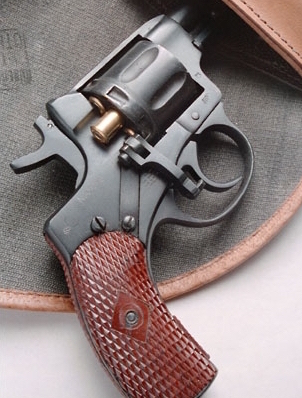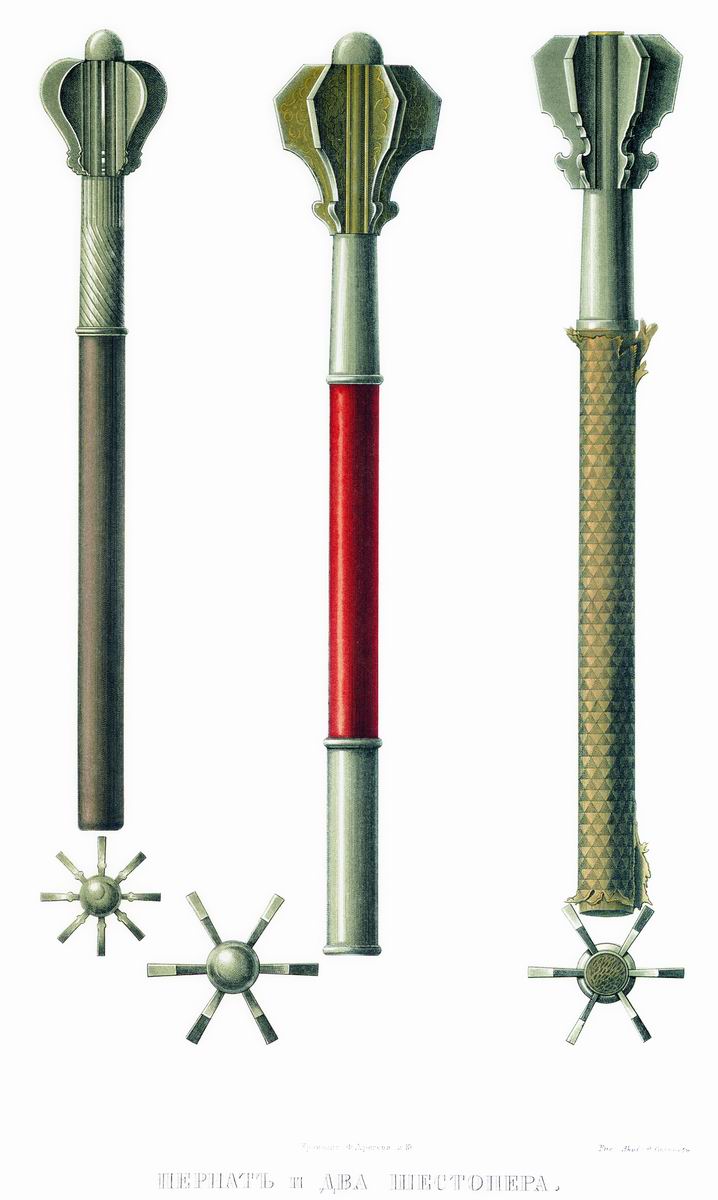|
List Of Russian Weaponry
The following is a list of modern Russian small arms and light weapons which were in service in 2024: Handguns Revolvers Pistols Special purpose Submachine guns Special purpose Shotguns Rifles Bolt-action Semi-automatic Selective-fire Special purpose Anti-materiel rifles Machine guns Squad automatic weapons (SAWs) General-purpose Heavy Hand grenades Fragmentation Anti-tank Grenade launchers Stand-alone Attached Automatic grenade launchers Rocket launchers General purpose Incendiary and thermobaric Special purpose Recoilless rifles Mortars Anti-tank guided missiles Man-portable air defense system Landmines See also * List of equipment of the Russian Ground Forces * List of Russian weaponry makers References {{DEFAULTSORT:Russian small arms and light weapons Firearms of Russia, Lists of military equipment Lists of weapons Russian and So ... [...More Info...] [...Related Items...] OR: [Wikipedia] [Google] [Baidu] |
Nagant M1895
The Nagant M1895 is a seven-shot, gas-seal revolver designed and produced by Belgian industrialist Fabrique d'armes Émile et Léon Nagant, Léon Nagant for the Russian Empire. The Nagant M1895 was chambered for a proprietary cartridge, 7.62×38mmR, and features a gas-seal system, in which the cylinder moves forward when the gun is cocked, to close the gap between the cylinder and the Gun barrel, barrel, providing a boost to the muzzle velocity of the bullet and allowing the weapon to be Suppressor, suppressed. Its design would inspire the Pieper M1893 carbine and Steyr 1893 revolver. History The Nagant was designed by Léon Nagant, whose brother Émile had also taken part in designing the Mosin–Nagant rifle. The Nagant M1895 was adopted as the standard issue Sidearm (weapon), sidearm for the Imperial Russian Army and police officers, where it replaced earlier Smith & Wesson models such as the Smith & Wesson Model 3, Model 3.Kowner, '' Historical Dictionary of the Russo-Japan ... [...More Info...] [...Related Items...] OR: [Wikipedia] [Google] [Baidu] |
SR-1 Vektor
The SR-1 Vektor also known as the Gyurza (''Гюрза'', Russian for " blunt-nosed viper") or Serdyukov SPS is a semi-automatic pistol. Design The operating system is based on the Beretta 92, utilizing a dropping block. The frame is polymer and steel. While the SR-1 does not have a traditional manual safety, it is equipped with a grip safety that disengages the trigger mechanism, as well as a trigger safety to prevent fire when the trigger is not depressed. Additionally the hammer must also be placed into half-cock to engage the sear and enable double action firing. The SR-1 pistol is chambered in 9×21mm Gyurza, a specialised cartridge also used by the SR-2 Veresk submachine gun designed for the Russian military. Variants SR-1M The SR-1M variant redesigns and modernizes the handguns frame, adds a lanyard loop behind the magazine, and enlarges the grip safety device for easier usage. SR-1MP The SR-1MP variant is a further modernization kit of the SR-1M which adds two ad ... [...More Info...] [...Related Items...] OR: [Wikipedia] [Google] [Baidu] |
MP-443 Grach 06
The MP-443 ''Grach'' () or "PYa", for "''Pistolet Yarygina'' ("Yarygin Pistol"), following traditional Russian naming procedure (), is a Russian 9mm semi-automatic pistol. Development The development was headed by the designer . It was developed under designation "'' Grach''" in response to Russian military trials, which began in 1993. In 2003, it was adopted as one of the standard sidearms for all branches of Russian military and law enforcement, alongside the Makarov, GSh-18, and SPS. Mass production of PYa pistols started in 2011. Design The PYa is a high-capacity, double-action, short-recoil semi-automatic pistol. Composition Even though the grips of the pistol are polymer, the weapon is largely made of metal (stainless steel for the barrel, carbon steel for the frame and slide). Operation Its barrel/slide locking is a simplified Colt– Browning design, similar to that found in many modern pistols (e.g. the SIG Sauer and Glock families of pistols). Th ... [...More Info...] [...Related Items...] OR: [Wikipedia] [Google] [Baidu] |
MP-446 Viking
The MP-446 Viking is an Hammerless, internal hammer firing 9×19mm Parabellum, 9mm Semi-automatic pistol, semi-automatic handgun originating from Russia. Design The MP-446 Viking was created by the Izhevsk Mechanical Plant as the civilian version of the MP-443 Grach, Yarygin PYa pistol used by the Russian military since 2003. The MP-446 is a short recoil operation, recoil-operated, locked breech pistol. It weighs around when unloaded, and has a Magazine (firearms), magazine capacity of 18 rounds. The key differences between MP-446 and MP-443 are the frame materials (polyamide rather than steel) and barrel construction: the barrel of the MP-446 was intentionally weakened to prevent the safe use of high-powered armour-piercing military rounds (i.e. Russian 9×19mm Parabellum, 9x19mm 7N21 type, 9x19mm NATO) or civilian "Overpressure ammunition, +P" or "+P+" cartridges. Variants MP-446 Viking Export variant with an 18-round magazineГалина Валеева. Ещё ра� ... [...More Info...] [...Related Items...] OR: [Wikipedia] [Google] [Baidu] |
MP-443 Grach
The MP-443 ''Grach'' () or "PYa", for "''Pistolet Yarygina'' ("Yarygin Pistol"), following traditional Russian naming procedure (), is a Russian 9mm semi-automatic pistol. Development The development was headed by the designer . It was developed under designation "'' Grach''" in response to Russian military trials, which began in 1993. In 2003, it was adopted as one of the standard sidearms for all branches of Russian military and law enforcement, alongside the Makarov, GSh-18, and SPS. Mass production of PYa pistols started in 2011. Design The PYa is a high-capacity, double-action, short-recoil semi-automatic pistol. Composition Even though the grips of the pistol are polymer, the weapon is largely made of metal (stainless steel for the barrel, carbon steel for the frame and slide). Operation Its barrel/slide locking is a simplified Colt– Browning design, similar to that found in many modern pistols (e.g. the SIG Sauer and Glock families of pistols). Th ... [...More Info...] [...Related Items...] OR: [Wikipedia] [Google] [Baidu] |
GSh-18 06
The GSh-18 (Cyrillic: Г Ш-18) is a 9mm semi-automatic pistol developed by the KBP Instrument Design Bureau in Tula during the 1990s. History The GSh-18 entered service in 2000 with the Russian Ministry of Justice. It was only in 2003 that the pistol was widely adopted under Decree of the Government of the Russian Federation No. 166. The pistol's name is derived from its designers—Gryazev and Shipunov—and its magazine capacity of 18 rounds. Design details Operation The GSh-18 is a rotating-barrel, short recoil, locked-breech pistol with 10 locking lugs spaced equally around the barrel, the large locking surface area resulting in a strong lockup, making it suitable for high-velocity ammunition loads. The pistol incorporates a pre-set striker. Two different designs of grip have been observed. The slide and working parts are steel, and the weapon has a polymer frame. Ammunition The GSh-18 is designed to fire standard 9×19mm Parabellum as well as the Russian 9×19m ... [...More Info...] [...Related Items...] OR: [Wikipedia] [Google] [Baidu] |
Pernach OTs-33
A pernach (, or , ) is a type of flanged mace originating in the 12th century in the region of Kievan Rus' and later widely used throughout Europe. The name comes from the Slavic word ''перо'' (''pero'') meaning feather, referring to a type of mace resembling an arrow with feathering. Uses against armour and mail Among a variety of similar weapons developed in 12th-century Persian- and Turkic-dominated areas, the pernach became pre-eminent, being capable of penetrating plate armour and plate mail. Ceremonial uses A pernach or shestoper (, "six-feathered") was often carried as a ceremonial mace of rank by certain Eastern European military commanders, including Polish magnates, Ukrainian Cossack colonels and sotniks (cf. centurion). Symbolic uses In Ukraine, it symbolized the authority of polkovnyks (regional leaders or military officers) [...More Info...] [...Related Items...] OR: [Wikipedia] [Google] [Baidu] |
Russian Ministry Of Internal Affairs
The Ministry of Internal Affairs of the Russian Federation (MVD; , ''Ministerstvo vnutrennikh del'') is the interior ministry of Russia. The MVD is responsible for law enforcement in Russia through its agencies the Police of Russia, Migration Affairs, Drugs Control, Traffic Safety, the Centre for Combating Extremism, and the Investigative Department. The MVD is headquartered in Zhitnaya Street 16 in Yakimanka, Moscow. Vladimir Kolokoltsev has been the Minister of Internal Affairs since 2012. History Russian Empire (1802–1917) The first interior ministry (MVD) in Russia was created by Tsar Alexander I on 28 March 1802. The MVD was one of the most powerful governmental bodies of the Empire, responsible for the police forces and Internal Guards, and the supervision of gubernial administrations. Its initial responsibilities also included prisons, firefighting, state enterprises, the state postal system, state property, construction, roads, medicine, clergy, natural re ... [...More Info...] [...Related Items...] OR: [Wikipedia] [Google] [Baidu] |
OMON
OMON is a system of military special police units within the Armed Forces of Russia. It previously operated within the structures of the Soviet and Russian Ministries of Internal Affairs (MVD). Originating as the special forces unit of the Soviet Militsiya in 1988, it has played major roles in several armed conflicts during and following the 1991 dissolution of the Soviet Union. OMON is much larger and better known than SOBR, another special-police branch of the National Guard of Russia. In modern contexts, OMON serves as a riot police group, or as a gendarmerie-like paramilitary force. OMON units also exist in Belarus, Kazakhstan, Tajikistan, and other post-Soviet states. However, some post-Soviet units have changed names and acronyms. Russian speakers commonly refer to OMON officers as ''omonovtsy'' (; singular: omonovyets – ). On 5 April 2016 OMON became part of the newly-established National Guard of Russia, ending its years as part of the MVD. The MVD continues to ... [...More Info...] [...Related Items...] OR: [Wikipedia] [Google] [Baidu] |
Stechkin APS
The Stechkin or APS (''Avtomaticheskiy Pistolet Stechkina'' = ''Автоматический Пистолет Стечкина'') is a Soviet selective fire machine pistol that is chambered in 9×18mm Makarov and 9×19mm Parabellum. History Submachine guns such as the PPSh-41 or the PPS-43 were declared obsolete shortly after the adoption of the AK47 assault rifle. A new self-defence weapon was requested for artillery and mortar crews, tank crews and aircraft personnel, for whom a cumbersome assault rifle was deemed unnecessary. Igor Yakovlevich Stechkin, recently graduated in 1948 from the Tula Mechanical Institute, began work on this new automatic weapon concept, competing against other prolific designers such as Vojvodin and Kalashnikov. Stechkin designed a select-fire pistol capable of accurate fire up to 200 meters, with the possibility of attaching a combination holster/shoulder stock. Field-testing of the first prototypes was undertaken from April to June 1949. ... [...More Info...] [...Related Items...] OR: [Wikipedia] [Google] [Baidu] |




